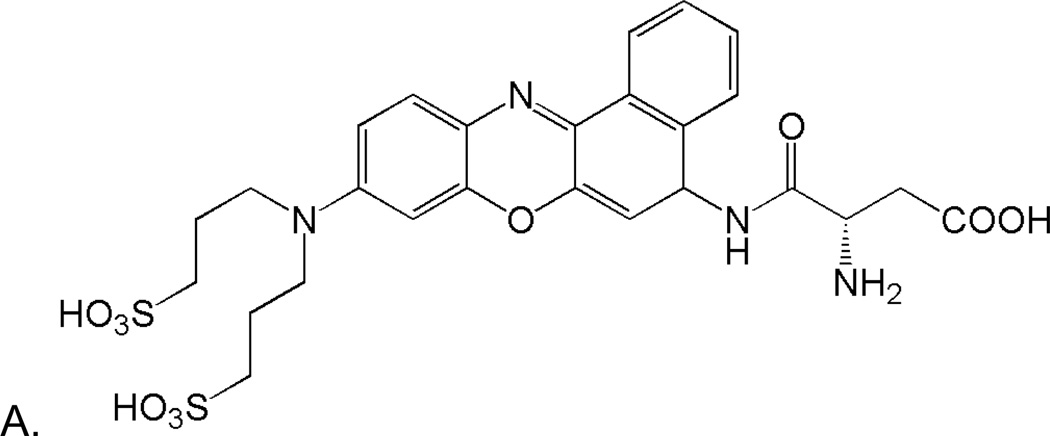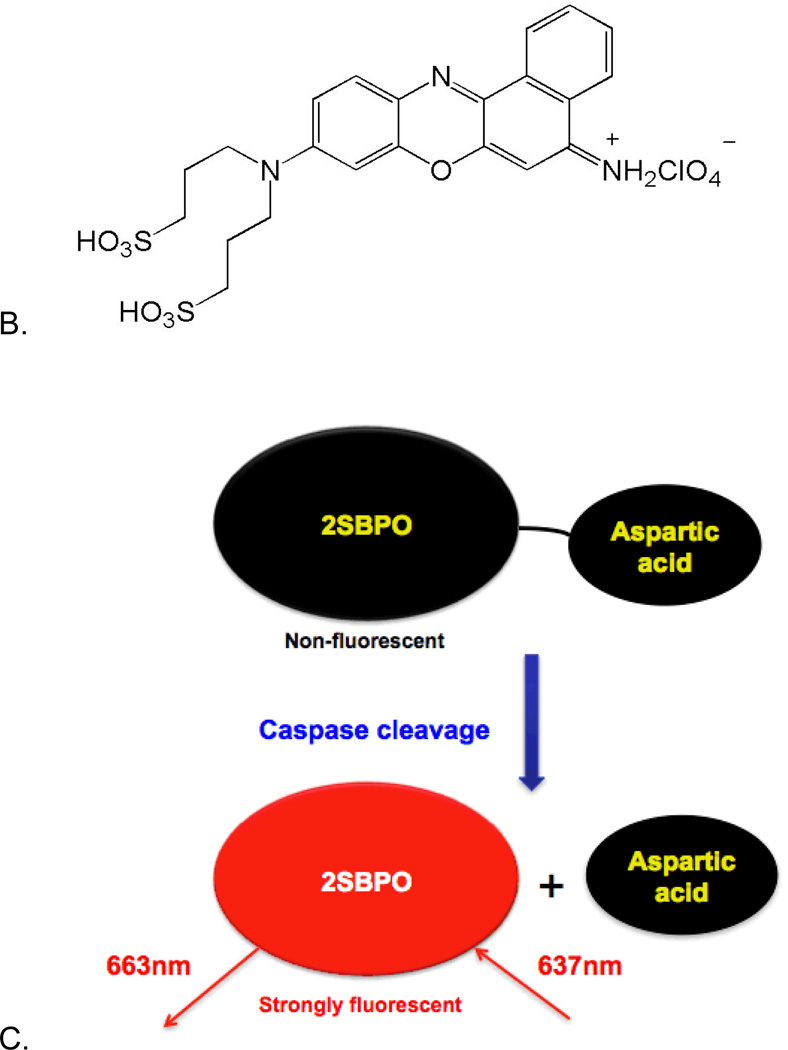Figure 1.
Structures of 2SBPO-Casp(A) and 2SBPO(B). The aspartic acid group renders the probe cell permeable and non-fluorescent. Upon cleavage (C), 2SBPO is retained in cells, generating a strong fluorescence signal (a synthetic scheme for (A) and (B) are found in Electronic Supplementary Information).


